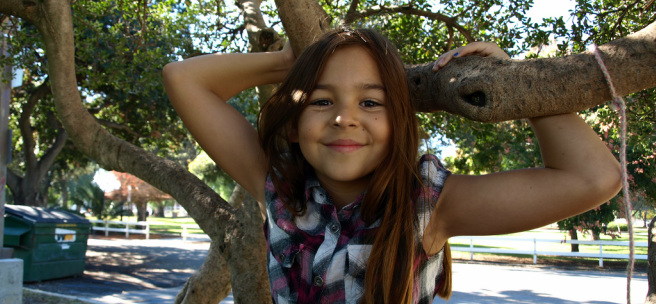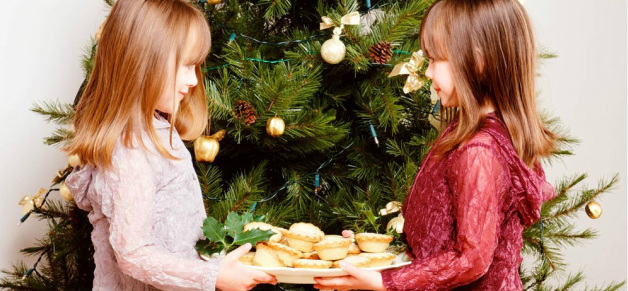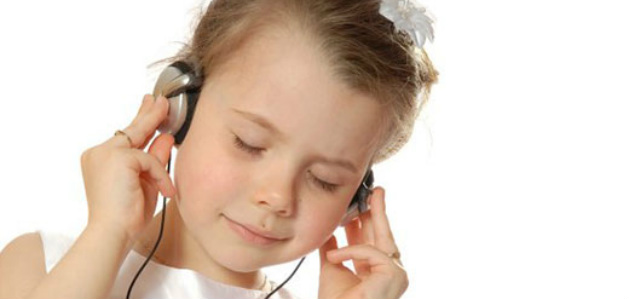|
By Laura Boggess When I was small, I would run as fast as I could with arms outstretched, letting the wind collect under makeshift wings. I was an airplane, a bird, or a dragon, flying over vast kingdoms. When the moon peeked through the dark at night, these wings would take me from my bed up into the sky, through stardust and past fiery comets—the curtains of the heavens opening wide to receive me. And I would meet with God—fly straight into his arms and let him rock me to sleep in his great lap. As I grew up, I learned the limits of our natural world. The world grew smaller, and God seemed light years away. I came to understand that faith is being certain of what we do not see,1 and my childhood nighttime meetings with an unseen God faded to a sweet memory. More and more, my knowledge increased and my faith grew; yet, more and more, I longed for that close communion of long ago. A few years ago, I went walking with my two young sons on a snowy evening. I remember how they ran ahead, lost in the tumbling play that only brothers know, leaving me in a wake of laughter. I stood alone under that white sky and looked up. Was it true that I once flew through these same heavens; cheeks flushed and eyes pools of starlight? When did I stop believing that with God all things are possible? Or, rather, when did my imagination become so small that I stopped expecting the seemingly impossible? When did my feet become so rooted to the crust of the earth that I let gravity weigh down my idea of who God is? It could have been when I turned seven or eight years old. At least, that’s what Jean Piaget’s theory of cognitive development would suggest. He claimed that the preoperational stage of thinking, which spans approximately ages 2–7, is characterized by the development of symbolic thinking, memory and imagination—all of which allow engagement in rich make-believe play. This thinking, based on intuition instead of logic, makes it difficult to grasp cause and effect, time, and comparison. Experts view this as a limitation, but my dictionary defines intuition as an insight into truth that is not perceived by the conscious mind. That sounds to me like the place where the Holy Spirit touches my consciousness—steering me this way or that. The world may view that as a limitation, but I wonder… When our brains reach that stage when they are capable of logic, do the wonder structures in our brains have to shrink to make room? If so, how can we expand them again? How can we grown-ups, long past Piaget’s preoperational stage, recover the wild joy of wonder? How can I revisit that place where the Holy Spirit begins to touch my conscious and steer me again, offering his intuition and insight? Jesus tells us in Matthew 18 that unless we become like little children we will never enter the kingdom of heaven. Whoever humbles himself like this child is the greatest in the kingdom of heaven, he said. What might that look like? How do I come to Jesus like a child? One answer came that cold day in February—lifted with laughter on the snow. Play. But what would play look like in my grown-up world? In his book Play: How it Shapes the Brain, Opens the Imagination, and Invigorates the Soul, Dr. Stuart Brown says when we engage in true play, our sense of self-consciousness diminishes and we lose track of time. Play allows us to live fully in each moment. I start to practice play, losing myself completely, standing at the window, watching a goldfinch peel a sunflower seed. Hours spent pulling weeds in the vegetable garden pass like seconds—the scent of the tomato plant leaves intoxicates. And when the sun shines on water, leaving a rosy trail behind her, I’m drawn into the passage of light through water. Play reminds me how it feels to be a child—innocent, everything new. God is inviting me to play each time he points my heart to beauty. That evening in the snow, my sons’ laughter echoing through the streets, I felt the internal prompting. I felt the invitation. Once again, I lifted my arms up to my sides—stretched out my wings. This fortyish mama let herself glide in circles, let the wind collect under makeshift wings. And I flew. Straight into the arms of God. * Play looks different for each person. What simple, playful activities fit your personality and can help you connect with God more intimately, becoming like little children? Courtesy of Anchor; reused with permission. Photo by Lesley Show via Flickr.
0 Comments
By Evelyn Petersen, Web reprint
As Christmas draws near, its accompanying marketing frenzy and the continual “I want” heard from children in stores motivates this letter. Parents, please, if you want to do something really special for your children this year, help them learn about giving instead of getting. Many of today’s kids don’t understand what giving is about. This is a family value which we must take time to teach. Children who are only on the receiving end of Christmas gifts have no concept of the true meaning of Christmas. In addition, they are completely deprived of the joy that comes from giving something meaningful to another person. We need to stop emphasizing what to give the children, and spend some time teaching them how to give to others. If you help your children make simple gifts for others, you will give them long lasting feelings of satisfaction and self-esteem that will prove far more gratifying than any toy. The time you spend (a few hours on several weekends) will be well worth it in terms of things money can’t buy…family values, communication and traditions. Now is the time to start planning gifts your children will make. Have a “Christmas Club” meeting with your kids this weekend to list people for whom they want to make gifts, and plan what to make. Block off a few hours the next few weekends to make the gifts. Keep homemade gifts simple. Children have limited craft skills, and parents have limited time to gather and set up materials and provide guidance. Don’t wait; start now. The closer it gets to Christmas, the harder it is to have time for this project, which is a family fun thing, not a chore. Easy gifts that 2-to 5-year-olds can make:
5-to 7-year-olds can also make:
Barbara Curtis “I didn’t grow up with the arts,” a young mom named Shelley confided over coffee some years ago. “Now I wish I had. I’d like to give my kids some exposure—but I’m not really sure where to start.” Shelley didn’t come to me for advice because of my music or art degree (I have neither), but just because I’m a mega-mom with a track record. Maybe she’d noticed my kids da-da-da-da-ing along with Beethoven’s Fifth. Or rehearsing lines from Shakespeare. Or studying a book of Chagall. Maybe she was impressed that they seemed comfortable and unembarrassed—as though Mozart was as cool as Miley. And Shelley’s hunch is right—I have had a lot to do with my kids’ love of the arts. But she’d probably be surprised to know I started out feeling pretty inadequate, asking the same questions she’s asking now. Then again, looking at my kids, how could she have known I grew up in a home where country music and black velvet paintings were the rule? That my mom was too exhausted from eking out a living to do much more than laundry on the weekend? That as a kid, I thought concerts and museums were only for school field trips? But as a young mother, I knew I was in a position to change all that for my own kids. And I knew from my Montessori training that the best time to introduce my kids to anything was the early years—when all the windows of opportunity were wide open. All this by way of saying—It’s never too early to turn your kids on to the arts, and it’s never too late for you! Music For nearly two decades, researchers have been investigating “The Mozart Effect”—which links children listening to classical music with increased intelligence. While there is no final word on the matter, as a mom who’s learned to choose classical, I can say it’s been a rich addition to our home life and broadened my children’s interest in all kinds of music. At home Try a little Mozart in the morning, a little Brahms at night. You’ll find that a background of calm classical music will even out the tone at those cranky times of day—like when you’re getting dinner ready. If you’ve always thought of classical music as something for older folks, you’ll be surprised at how even the youngest family members will prick up their ears at the first strains. If you’re not sure where to start, check the music store’s children’s section for many new classical CDs featuring works which hold the most kid appeal. There are even opera selections bundled especially with children in mind. An added blessing for believing parents—some of the most inspired classical works are part of our Christian heritage. Handel’s Messiah, for example, is a major work (3 CDs) consisting solely of prophecies about Jesus and scriptures from his life, death, and resurrection. Listening to these verses set to rich music and sung by the world’s greatest voices can be a powerful reinforcement of your family’s faith—especially at Christmas and Easter. Out and about Check your local symphony box office for concerts aimed at children—sometimes called Lollipop Concerts. These feature short, compelling works that paint a picture or tell a story, often with commentary to help reveal what to listen for. Look also for performances by young musicians. And help your children make the most of their symphony experience by an advance trip to the library for books with pictures of the various instruments, and tapes which teach how to recognize their sounds. If you know the concert program beforehand, listen to the selections a few times with your kids to familiarize them. And don’t forget dance. The Nutcracker at Christmas is a wonderful way to introduce your children to classical music. The vivid visual impressions will draw them into the music not just the first time, but each time they hear it and remember. Art If pictures are worth a thousand words to us, they’re worth a million to children. Perhaps especially to those with not-yet-extensive vocabularies. Keep in mind how children’s thinking develops. Little ones’ minds dwell strictly in the concrete. The capacity to understand abstract concepts develops gradually and is grounded in examples they’ve encountered earlier. So, for instance, a child does not understand the word bravery, but he can see it in a soldier going into battle; does not understand the word devotion, but can see it in the way a mother looks at a child. At home For children, art education begins quite simply—by seeing art in his own environment. As a Montessori teacher, I was taught to think of the environment through a child’s eyes. Imagine taking a tour of your house on your knees—what surrounds your child at his eye level? Even if you have some interesting art on your walls at your eye-level, it will be years before your children enjoy it. One easy and inexpensive way to surround your child with art is to collect note cards with famous works, especially those that have a lot of kid-appeal, like Renoir’s Girl with Watering Can or Winslow Homer’s Crack the Whip (or download and print free at the Web Gallery of Art). Buy small ready-made frames, then group your mini works of art here and there where your child is apt to spend time. If you have a reading nook, for example, hang pictures of people reading. By the coat rack, pictures of children playing outdoors. Now and then, talk about the pictures and ask your child questions: “What are the boys doing? Why are they smiling? Does it look like it will rain?” Out and about If you’re not familiar with nearby art museums, now’s a good time to get to know them better. If you are familiar, just rethink them through your children’s eyes. When you make plans to visit an art museum together, prepare your child. Explain why you need to wear comfortable, quiet shoes, to use quiet voices, to look and not touch. Don’t plan on seeing the whole museum in one visit, and be sure to take a break for lunch or a snack. Let your child set the pace (unless you need to help her slow down). When he is interested in a particular picture or sculpture, read the label nearby for the title, the artist’s name, the date, and the medium. If there’s a gift shop, let your child pick out a few postcards of the works she likes. These will be the ones she’ll never forget, the first items in her own art collection. And as with music, much of our Christian heritage is represented in classical art. There’s something very gratifying about having your child instantly recognizing the subject matter of a painting straight out of the Bible. “But she’s not wearing any clothes!” If your children are of a certain age, they’re likely to display some embarrassment over artistic nudity. Though some Christian parents may decide nudity of any kind is unacceptable, others may want give their children guidelines to help them distinguish the difference between pornography and art. With my children, I used the standard of the artist’s intent. In classical Greek sculpture, for instance, the artist’s primary motivation was interest in and appreciation of the human structure and form. Most familiar classical nudes are neither salacious nor vulgar. They are not manipulative, not intended to arouse lust in the beholder. On the other hand, pornography is clear in its intention to arouse lust and manipulate the beholder. Pornography—including television commercials which use nudity to sell anything from soap to soda pop—cannot be considered art. Drama I’ll never forget the year five-in-a-row of my kids—Josh, Matt, Ben, Zach, and Sophia—put onThe Wizard of Oz for our family. They did own production from the first idea to the last bow. Our family’s big, so it lends itself to encouraging a flair for drama in our kids. For smaller families who want to expose their kids to drama, you’ll need to seek out opportunities. Check the phone book’s yellow pages or your newspaper’s weekly events pages for children’s theater—classes, auditions, or current productions. If your children like musical theater—and what child wouldn’t?—they’ll probably enjoy a high school production ofSound of Music as much as a professional version. Whatever you do, don’t underestimate your kids’ capacity. I’ve found children as young as nine to be very receptive to Shakespeare. Even if they don’t understand every word, they understand the action and emotions. Final Thoughts Parents know that while most of us can learn more than one language, those who feel most comfortable with two languages were exposed to both from the earliest years. The same principle works in the area of the fine arts. Early exposure, even the most casual, will enrich your children’s lives now and as they grow. They’ll be comfortable in the arts—and who knows? You may discover—because God doesn’t limit our kids to the same gifts he’s given us—a budding Picasso or Pavarotti living right under your roof. From Crosswalk.com, April 2009
Do you want to channel your child’s unbounded energy and curiosity into positive and rewarding learning experiences? Keys to Toddlers and Preschoolers is a parenting guide with scores of fun, practical learning activities and suggestions to keep your ever on-the-go little one occupied for hours. More importantly, learn how to prepare
your child for life’s challenges and changes, and lay a foundation of faith that will guide and support him or her all through life. By Hannah Richardson, BBC News education reporter
Children should be allowed to get bored so they can develop their innate ability to be creative, an education expert says. Dr Teresa Belton told the BBC cultural expectations that children should be constantly active could hamper the development of their imagination She quizzed author Meera Syal and artist Grayson Perry about how boredom had aided their creativity as children. Syal said boredom made her write, while Perry said it was a "creative state". The senior researcher at the University of East Anglia's School of Education and Lifelong Learning interviewed a number of authors, artists and scientists in her exploration of the effects of boredom. She heard Syal's memories of the small mining village, with few distractions, where she grew up. Dr Belton said: "Lack of things to do spurred her to talk to people she would not otherwise have engaged with and to try activities she would not, under other circumstances, have experienced, such as talking to elderly neighbours and learning to bake cakes. "Boredom is often associated with solitude and Syal spent hours of her early life staring out of the window across fields and woods, watching the changing weather and seasons. "But importantly boredom made her write. She kept a diary from a young age, filling it with observations, short stories, poems, and diatribe. And she attributes these early beginnings to becoming a writer late in life." 'Reflection'The comedienne turned writer said: "Enforced solitude alone with a blank page is a wonderful spur." While Perry said boredom was also beneficial for adults: "As I get older, I appreciate reflection and boredom. Boredom is a very creative state." And neuroscientist and expert on brain deterioration Prof Susan Greenfield, who also spoke to the academic, recalled a childhood in a family with little money and no siblings until she was 13. "She happily entertained herself with making up stories, drawing pictures of her stories and going to the library." Dr Belton, who is an expert in the impact of emotions on behaviour and learning, said boredom could be an "uncomfortable feeling" and that society had "developed an expectation of being constantly occupied and constantly stimulated". But she warned that being creative "involves being able to develop internal stimulus". "Nature abhors a vacuum and we try to fill it," she said. "Some young people who do not have the interior resources or the responses to deal with that boredom creatively then sometimes end up smashing up bus shelters or taking cars out for a joyride." 'Short circuit'The academic, who has previously studied the impact of television and videos on children's writing, said: "When children have nothing to do now, they immediately switch on the TV, the computer, the phone or some kind of screen. The time they spend on these things has increased. "But children need to have stand-and-stare time, time imagining and pursuing their own thinking processes or assimilating their experiences through play or just observing the world around them." It is this sort of thing that stimulates the imagination, she said, while the screen "tends to short circuit that process and the development of creative capacity". Syal adds: "You begin to write because there is nothing to prove, nothing to lose, nothing else to do. "It's very freeing being creative for no other reason other than you freewheel and fill time." Dr Belton concluded: "For the sake of creativity perhaps we need to slow down and stay offline from time to time." |
Categories
All
Archives
March 2024
LinksFree Children's Stories |





 RSS Feed
RSS Feed
